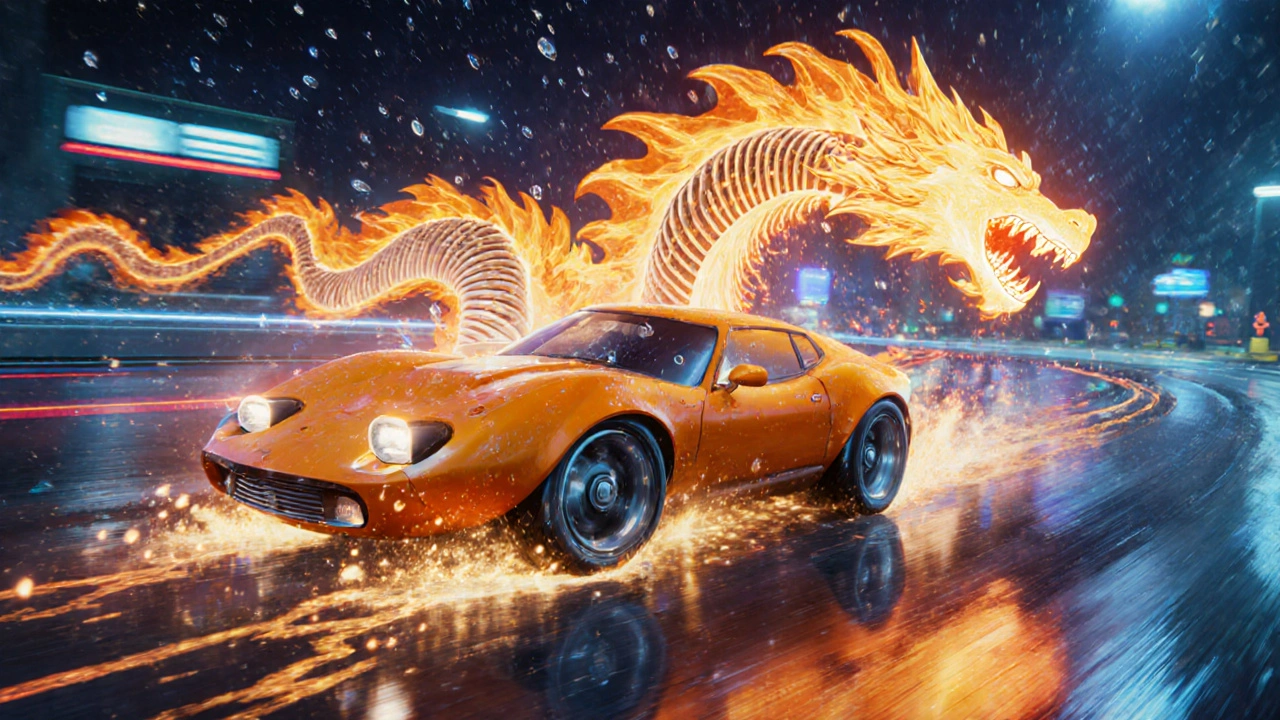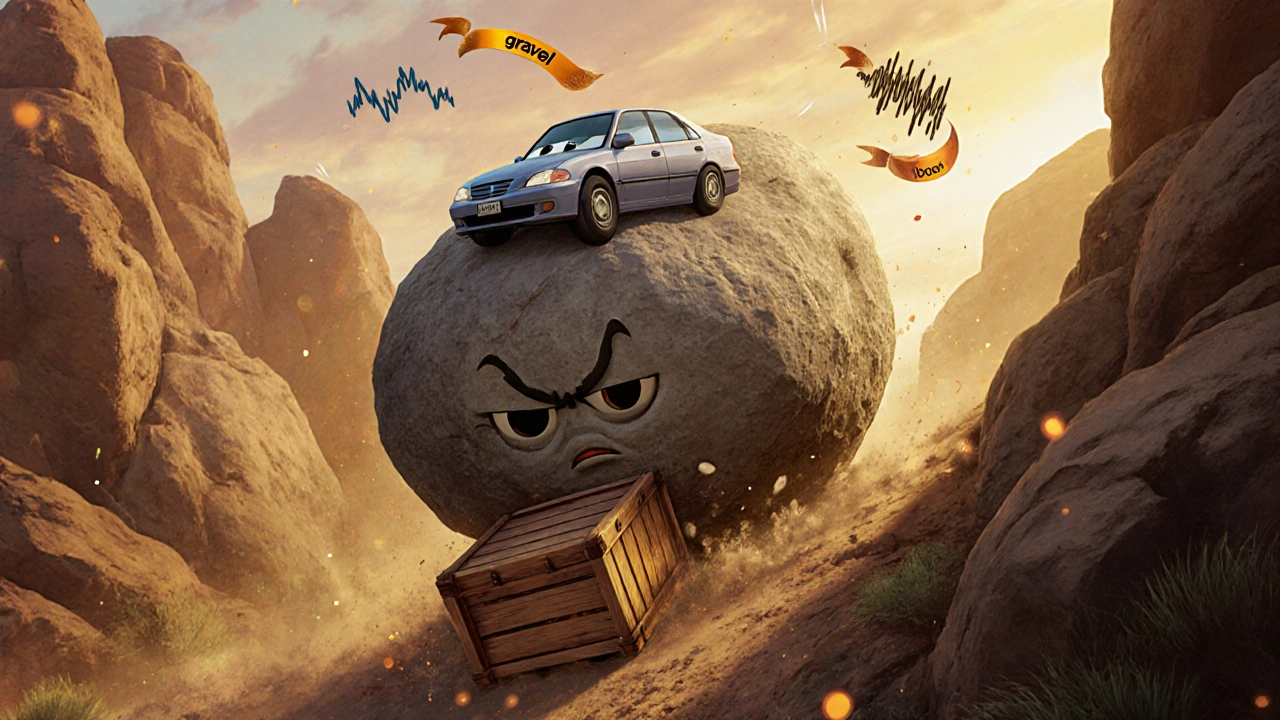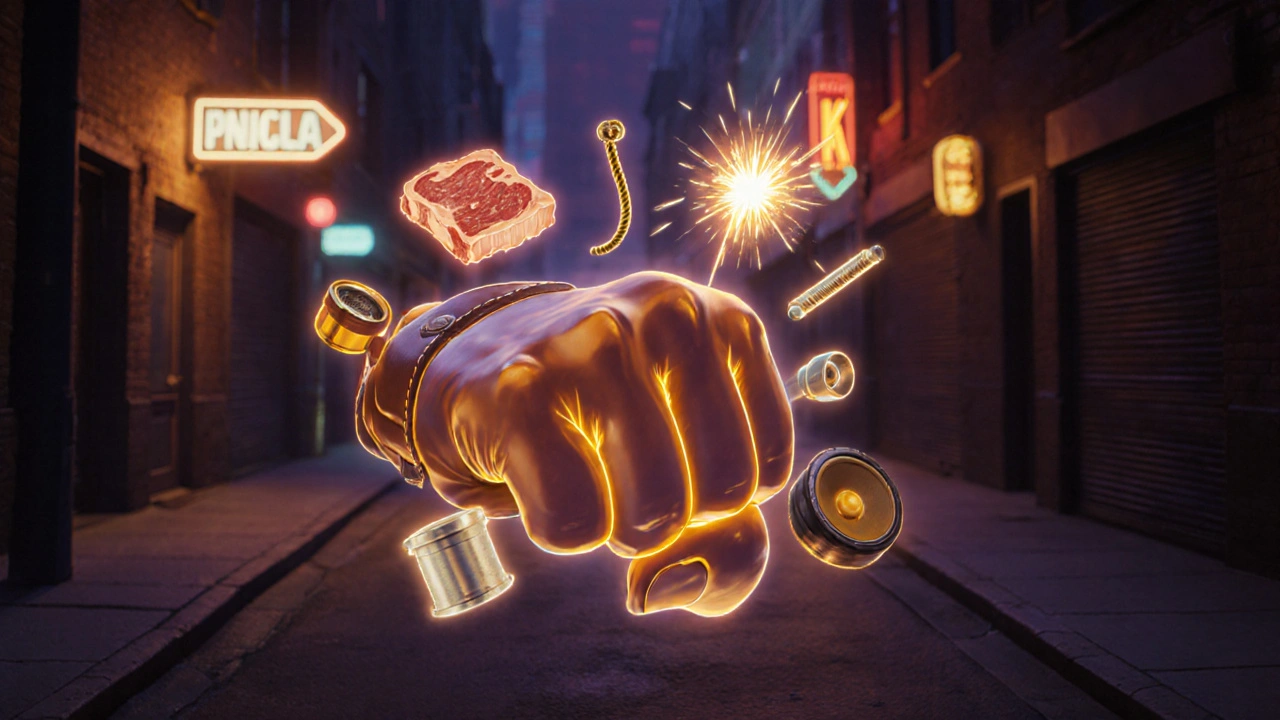Why a Punch Doesn’t Sound Like a Punch
Ever watched a movie where a character throws a punch and it sounds like a wet sack of meat hitting a wall? Now think about the last time you saw a superhero land a hit that made your chest rattle. Same motion. Totally different feeling. That’s not magic. That’s action sound design.
Real punches don’t sound like they do in films. In real life, a punch to the jaw makes a dull thud. But in John Wick or Mad Max: Fury Road, every strike echoes like a thunderclap. Why? Because sound designers don’t record reality-they rebuild it. They take a handful of unrelated sounds, layer them, stretch them, distort them, and turn a simple hit into something that feels like it’s shaking your bones.
The Three Layers of Action Sound
Every great action sequence is built on three invisible layers. You don’t hear them separately. You feel them together.
- Atmospheres: The background hum-the wind in an alley, the distant rumble of traffic, the low buzz of a neon sign. These don’t grab attention, but if they’re missing, the scene feels flat.
- Foley: The small, human sounds-footsteps on gravel, fabric rustling, a gun being racked. These ground the action in reality. Without them, characters feel like ghosts.
- Spot Effects: The big moments. The punch. The engine rev. The crash. These are the sounds that make you sit up straight. And these? They’re almost never real.
Think of it like painting. You don’t start with the bold strokes. You lay down the base colors first-the atmosphere. Then you add texture-the Foley. Finally, you hit the center with the brightest, loudest pigments-the spot effects.
How They Make a Punch Sound Like a Brick Through a Window
There’s no such thing as a ‘punch sound’ in nature. So sound designers build them from scratch. A single punch in a modern action movie might be made of five or six different recordings:
- A leather glove slammed into a wet sandbag
- A meaty thud from a block of raw pork
- A low-frequency rumble from a subwoofer test tone
- The crack of a bullwhip for the snap of skin and bone
- A metallic ping from a struck steel pipe for the impact’s high-end shimmer
These are layered, then processed. Compression makes the hit punch through the mix. Saturation adds grit. Low-pass filters remove unwanted frequencies. Reverb places it in the room. The result? A sound that doesn’t exist in the real world-but feels more real than anything you’ve ever felt.

Why a Car Engine Roars Like a Dragon
Car engines in movies don’t sound like car engines. A stock V8 in real life? It’s loud. But in Fast & Furious, it’s a living beast. Sound designers don’t just record a car. They record everything that could possibly relate to power.
They might start with a real engine, but then they add:
- The growl of a jet turbine from a model airplane
- The bass thump of a bass drum hit with a mallet
- The whine of a spinning industrial fan
- The crackle of a high-voltage transformer
They speed up the sound to make it feel faster. They layer it with a sub-bass tone that you don’t hear-you feel it in your ribs. They even record the sound of tires squealing on wet asphalt and blend it into the engine note so the car feels like it’s clawing at the road.
That’s why a Toyota Camry in a chase scene can sound like it’s about to explode. It’s not the car. It’s the sound.
The Most Famous Sound You’ve Never Heard
The boulder chase in Indiana Jones and the Raiders of the Lost Ark is legendary. The sound of that massive rock rolling down the hill? It wasn’t rocks. It wasn’t even a big object.
Sound designer Ben Burtt recorded the sound of a Honda Civic driving slowly over gravel. He slowed it down. Layered it with the creak of a wooden crate being dragged. Added a low rumble from a bass drum. The result? One of the most terrifying, weighty, and unforgettable sound effects in cinema history.
Same with Godzilla’s roar. It wasn’t a lion. It wasn’t an elephant. It was a leather glove dragged across the strings of a double bass. Slowly. Then pitched down. Then layered with a whale call and a tuba. That’s creativity. That’s sound design.
Why Libraries Aren’t Enough
There are thousands of sound effect libraries out there. You can buy a ‘Punch Pack’ for $20. You can download a ‘V8 Engine Bundle’ for $49. But if you use them raw? The audience notices.
Professional sound designers avoid canned sounds for key action moments. Why? Because they’re predictable. Generic. Lifeless.
Think of it like using stock photos in a movie poster. You can find one that looks fine. But it doesn’t feel unique. It doesn’t belong to your story. The same goes for sound. A punch from a library might be technically accurate-but it doesn’t carry the emotion of your character. It doesn’t reflect their anger, their desperation, their pain.
The best action sounds aren’t found. They’re made. They’re built. They’re born from experimentation. From failure. From trying something stupid and realizing it’s perfect.

What Happens When It Goes Wrong
Bad sound design doesn’t just ruin a scene-it kills the mood. Imagine a fight scene where every punch sounds identical. Or a car chase where the engine noise doesn’t change as the speed increases. Or worse-when the sound cuts out for a split second because the editor moved a shot by two frames.
Synchronization is a nightmare. If a scene is re-cut after the sound team has done their work, they have to redo everything. A single frame shift can mean re-recording 20 different layers. That’s hours of work. That’s thousands of dollars. That’s why top sound designers are treated like surgeons-they’re called in for the critical moments.
And if the sound is too loud? Too much bass? Too much reverb? The dialogue gets buried. The tension breaks. The audience doesn’t feel the impact-they feel fatigued.
The Future Is in the Details
Today’s action films don’t just need big sounds-they need subtle ones. The crackle of a character’s knuckles before they throw a punch. The way a motorcycle’s exhaust changes pitch as it leans into a turn. The faint hiss of steam escaping from a broken pipe as the hero runs past.
With Dolby Atmos and immersive audio systems in homes, sound design has become spatial. A punch doesn’t just hit your ears-it comes from the left, sweeps across, and lands behind you. An engine doesn’t just roar-it accelerates from the front, passes you, and fades into the rear speakers.
This isn’t just about technology. It’s about intention. Every sound must serve the story. A punch isn’t just noise-it’s a character’s rage made audible. An engine isn’t just power-it’s the heartbeat of a chase that can’t be stopped.
That’s why the best action sound designers aren’t technicians. They’re storytellers with microphones. They don’t record reality. They rewrite it. And in doing so, they make us feel things we never knew we could feel through sound alone.
What You’re Hearing Isn’t Real-But It’s More True Than Real
Sound design doesn’t copy life. It amplifies it. It distills emotion into vibration. A punch isn’t about breaking skin. It’s about breaking tension. An engine isn’t about combustion-it’s about escape, power, desperation.
When you hear that final roar of the DeLorean in Back to the Future, you don’t just hear a car. You hear freedom. When you hear the first hit in The Dark Knight, you don’t just hear a fist. You hear chaos.
That’s the power of action sound design. It doesn’t just support the picture. It becomes the emotion. It doesn’t just play in the background. It lives in your body.
Next time you watch an action movie, close your eyes. Listen. What you’re hearing isn’t real. But it’s the only thing that makes the scene feel real at all.

